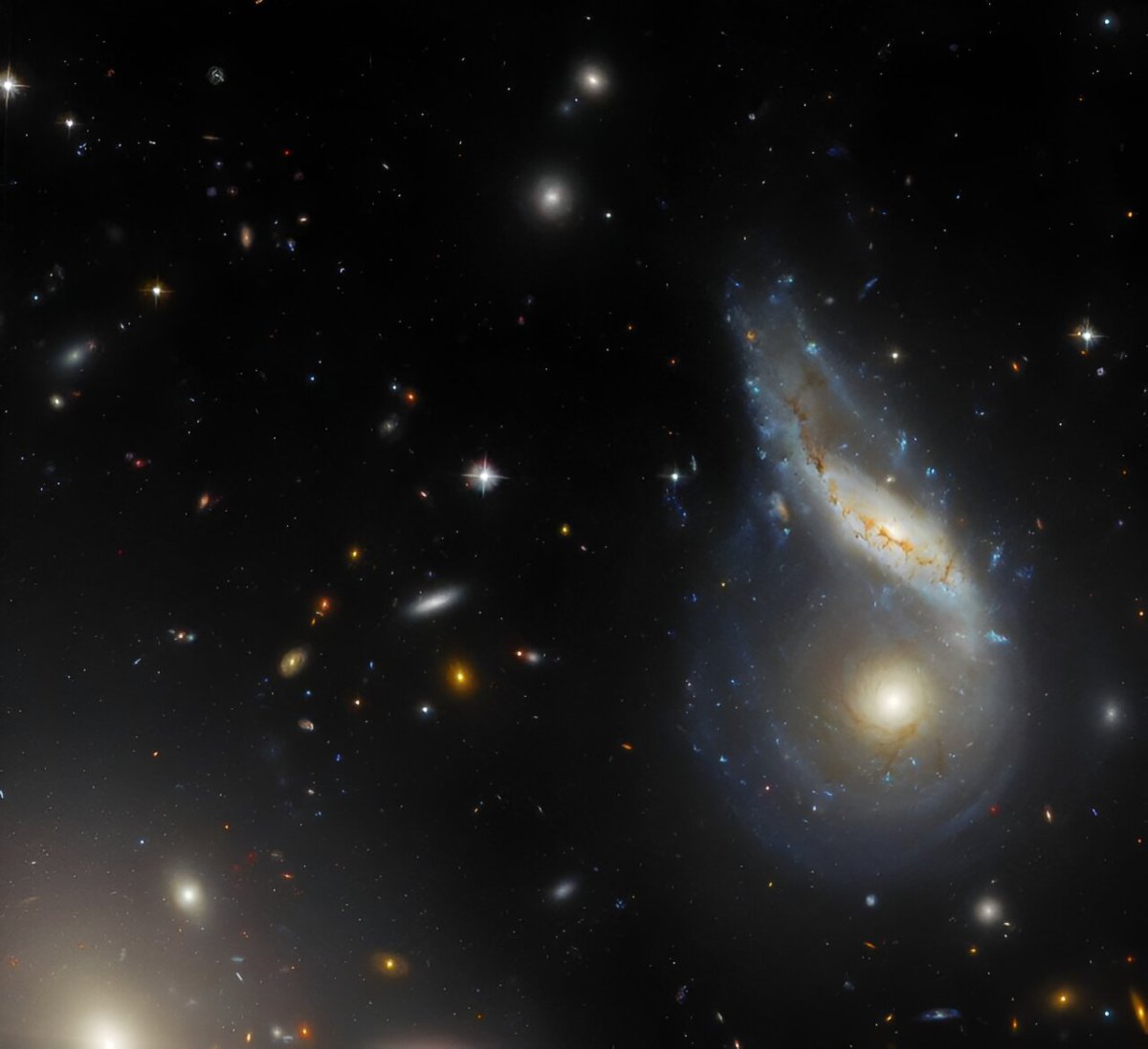
Arp Matter
NASA’s Hubble Space Telescope has snapped a glorious image of two massive galaxies in the process of colliding with each other.
The stunning image shows a warped spiral galaxy dubbed NGC 6040 slowly smashing into another spiral galaxy dubbed LEDA 59642, some 570 million light-years from Earth.
The resulting “monster merger,” as NASA refers to it in a blog post, has its own name, “Arp 122” and could eventually form a singular structure of dust, gas, and dark matter in a matter of hundreds of millions of years.
While it looks like the galactic equivalent of a car crash, the process is incredibly slow. Take, for instance the Milky Way, which is on a direct collision course with our neighboring Andromeda Galaxy — except that they’re not actually going to meet for another 4 billion years, or about the lifetime of the Earth so far.

Merger Acquisition
Astronomers have long studied galaxies in the process of merging throughout the universe. In many cases, the result of two merging galaxies is the formation of one much more massive one, which is how astronomers suspect giant elliptical galaxies like Cygnus A formed.
According to the Harvard Center for Astrophysics, somewhere between five and 25 percent of all galaxies are in the process of merging and the many varied shapes of galactic mergers are likely the effects of gravitational interactions.
Astronomers also suspect that these turbulent collisions are deeply connected with the process of star formation — but given how little we still know about that process, it remains a point of contention.
On the whole, there’s a lot that we still have yet to learn about these epic galactic collisions.
“It would be fascinating to know what Arp 122 will look like once this collision is complete,” NASA writes in its update, “but that will not happen for a long, long time.”
More on galaxy mergers: NASA Releases Hubble Images of Galaxies Smashing Into Each Other